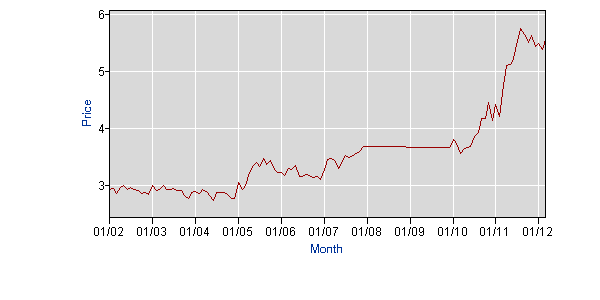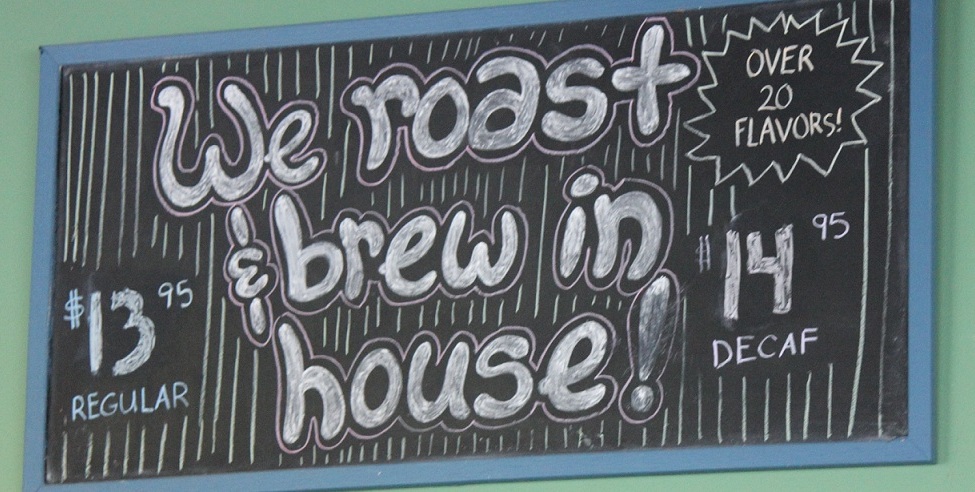Coffee crazed in Captiva
I was in Captiva, Fla., last weekend for a friend’s wedding, a phenomenal island location for a destination ceremony and reception. The couple married on the beach in the early evening, and we ate, drank and danced at a resort just across the island’s only two-lane roadway.
Captiva is along the Gulf side of Florida, about an hour’s drive from Fort Myers. I stayed with a group of friends who rented a beach house (complete with its own pool) about a mile from the resort. Aside from a few beachwear shops and some local grocers and eateries, there wasn’t much on the island in terms of big-box businesses like a McDonald’s, a Target or a CVS.
But Captiva Island was home to one big business: Starbucks.
We were about a quarter-mile walk away from an iced coffee, a vanilla latte or an espresso. And we made that caffeine trek more than a few times during our stay.
At home, I brew my own coffee, and I take several ounces to the office in a travel mug—my best friend every morning. After my third trip to the island Starbucks and another $5 jolt, though, I started thinking about the cost of coffee and how much we’ll throw down for our daily fix, or fixes in some people’s cases, when we’re on the go or traveling.
The average American worker spends more than $20 every week on coffee, according to a recent survey, for a yearly average of $1,092 per year. I would guess that even those estimates are conservative—have you noticed how expensive coffee has become in recent months?
The U.S. Department of Labor’s Bureau of Labor Statistics (BLS), reports a pound of coffee cost, on average, $5.56 per pound in March (it was as high as $5.77 in August 2011). A year ago, the same pound of coffee cost $4.64, and five years ago, it cost $3.30.
For the home consumer, you’ve probably noticed that the can of coffee that was $6 or $7 dollars last year is probably now going to cost you $8 or $9.
Check out this ten-year coffee price graph from the Bureau of Labor Statistics:
 Why such a spike? There are a few reasons:
Why such a spike? There are a few reasons:
- Demand is up, for one thing. The economy is slowly recovering and more people are getting back to work—and drinking more coffee than in recent years.
- Supply is somewhat short, for another. Weaker-than-expected harvests in Colombia and Brazil caught farmers and buyers off guard.
- Potential commodity swings influence sellers. If Starbucks and Green Mountain Coffee Roasters know demand is up and supply could be down, they’ll prematurely pass the buck on to consumers.
We consumers don’t care about any of that, because we’ll pay for that necessary buzz, as several friends and I did many times while soaking up the sun on a southwest Florida island.
But what if you’re trying to save here and there? What if you you’re a coffee addict?
My suggestion is to brew from home (an $8 can of coffee should last a couple weeks of morning cups) and resist those afternoon urges for a special latte or mocha.
Or you could downgrade from gourmet to convenience and stop by any of the five McDonald’s near your home or workplace—their coffee is 99 cents, all day every day, because McDonald’s apparently shrugs its shoulders at slowdowns in the economy and rising commodity prices.
But there were no Golden Arches in Captiva, so I had no choice but to head to Starbucks, right?

Andrew Cannarsa has been writing professionally for almost 10 years, first as a crime and safety reporter at a community daily newspaper outside Philadelphia, and then as a business reporter at Baltimore Examiner. He graduated with a journalism degree from Boston University in 2005. Follow him on Twitter @cannarsa.

